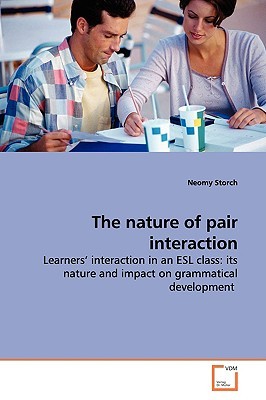
- We will send in 10–14 business days.
- Author: Neomy Storch
- Publisher: VDM Verlag
- ISBN-10: 3639143418
- ISBN-13: 9783639143416
- Format: 15.2 x 22.9 x 2.2 cm, softcover
- Language: English
- SAVE -10% with code: EXTRA
Reviews
Description
Pair work is frequently used in second language classes, yet there has been little research on the type of relations learners form when working in pairs. This study investigated the nature of pair interaction in an adult ESL class. The sources of data used were: audio recordings of pairs working on different tasks over the semester, a survey and interviews with the students, and the tasks completed. The study found four distinct patterns of pair interaction: collaborative, dominant/dominant, dominant/passive and expert/novice. These patterns were distinguishable in terms of the level of contribution to the task and how learners engaged with each other's contributions. The study found that the patterns remained fairly stable across the semester and regardless of task type. Interview with the learners suggested that the formation of these different patterns may be explained in terms of the learners' goals and whether members of the pair shared goals. The study also found that learners who collaborated or worked in an expert/novice pattern showed more evidence of language development than learners who formed dominant/dominant or dominant/passive patterns.
EXTRA 10 % discount with code: EXTRA
The promotion ends in 19d.22:21:15
The discount code is valid when purchasing from 10 €. Discounts do not stack.
- Author: Neomy Storch
- Publisher: VDM Verlag
- ISBN-10: 3639143418
- ISBN-13: 9783639143416
- Format: 15.2 x 22.9 x 2.2 cm, softcover
- Language: English English
Pair work is frequently used in second language classes, yet there has been little research on the type of relations learners form when working in pairs. This study investigated the nature of pair interaction in an adult ESL class. The sources of data used were: audio recordings of pairs working on different tasks over the semester, a survey and interviews with the students, and the tasks completed. The study found four distinct patterns of pair interaction: collaborative, dominant/dominant, dominant/passive and expert/novice. These patterns were distinguishable in terms of the level of contribution to the task and how learners engaged with each other's contributions. The study found that the patterns remained fairly stable across the semester and regardless of task type. Interview with the learners suggested that the formation of these different patterns may be explained in terms of the learners' goals and whether members of the pair shared goals. The study also found that learners who collaborated or worked in an expert/novice pattern showed more evidence of language development than learners who formed dominant/dominant or dominant/passive patterns.


Reviews